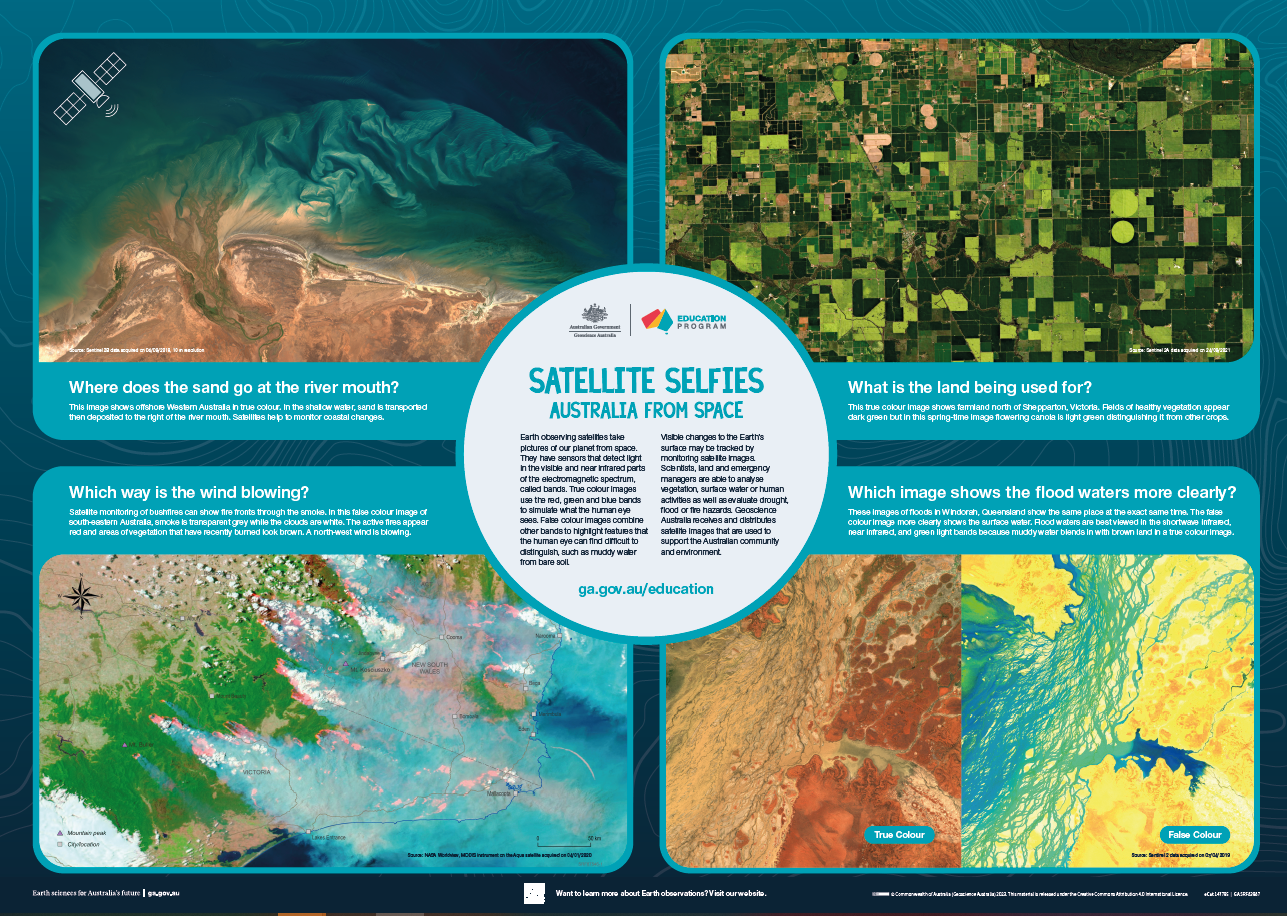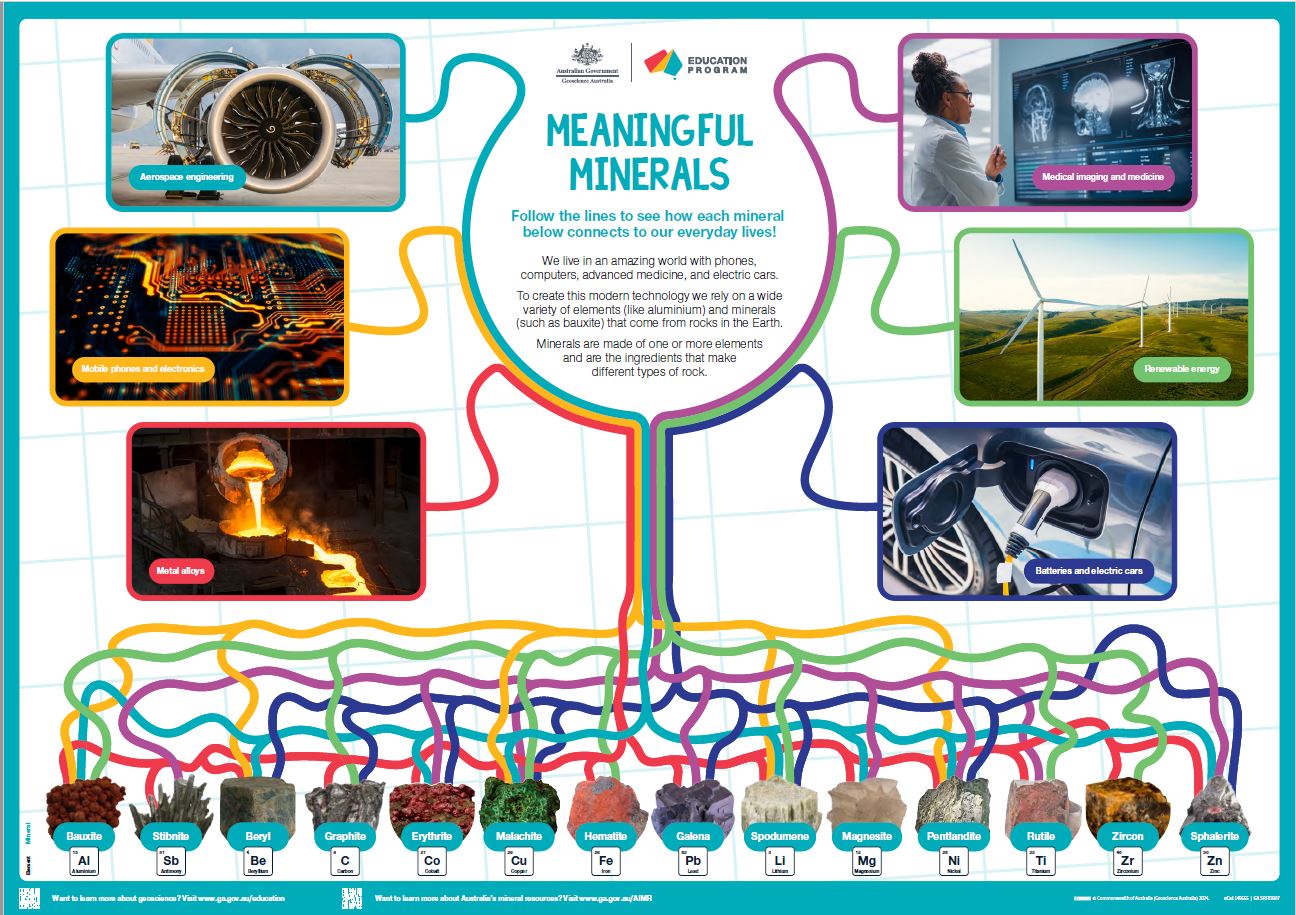EDUCATION
Type of resources
Keywords
Publication year
Topics
-
<div>The A1 poster incorporates 4 images of Australia taken from space by Earth observing satellites. The accompanying text briefly introduces sensors and the bands within the electromagnetic spectrum. The images include examples of both true and false colour and the diverse range of applications of satellite images such as tracking visible changes to the Earth’s surface like crop growth, bushfires, coastal changes and floods. Scientists, land and emergency managers use satellite images to analyse vegetation, surface water or human activities as well as evaluate natural hazards.</div>
-

This activity introduces the concepts of weathering and erosion by investigating why river pebbles are often rounded. The download includes background information for teachers and an activity sheet for students. The activity demonstrates the process of erosion using sugar cubes. Participants are asked to predict what might happen (a hypothesis) and then observe what does happen and relate this to the natural environment. A supporting video is available from YouTube.
-
In 1969, an explosive shower of meteorites fell outside the town of Murchison in country Victoria. Containing organic material as well as space dust grains older than the solar system, the Murchison Meteorite has become one of the most studied meteorites and a treasure trove for science. Hear about an eye-witness account of its fall to Earth and see samples of the meteorite in the National Mineral and Fossil Collection at Geoscience Australia.
-
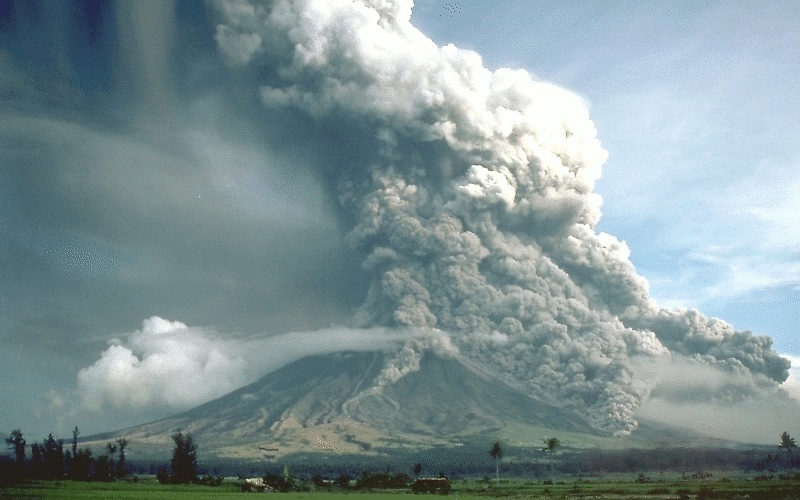
Activity for secondary and senior secondary students examining a hypothetical city and its vulnerability to volcanic hazard risk. Includes background information for teachers, PowerPoint presentation, student activity sheet and worked answers.
-
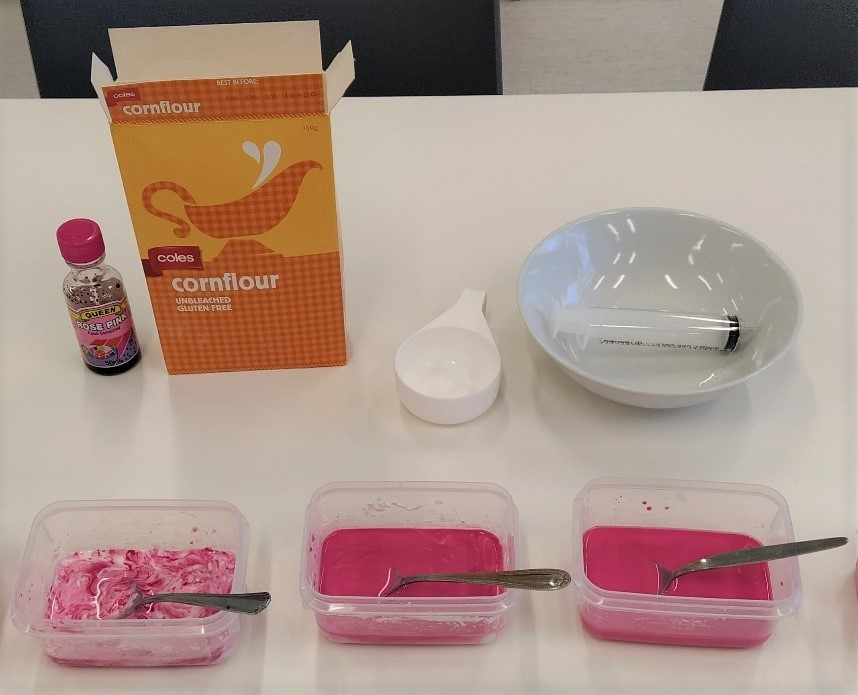
This activity introduces the concepts of lava viscosity and influence on volcanic cone shape. The download includes background information for teachers and an activity sheet for students. The activity involves making lava slime and racing this down a slope. Participants are asked to predict how lava viscosity might influence volcanic shape (a hypothesis) and then observe what does happen and relate this to the natural environment.
-
These videos are recordings of online secondary teacher professional learning sessions, delivered by Geoscience Australia’s Education Team. “Can I Fall Down the Cracks?” Plate Tectonic Misconceptions Part 1 This session focused on common misconceptions that are encountered when teaching plate tectonics. The student misconceptions addressed are: 1. We can’t see the tectonic plates (starting at 5:35) 2. The mantle is made of liquid rock (starting at 11:25) 3. The plates move by convection in the mantle (starting at 17:35) 4. When plates collide one always goes under the other (starting at 22:15) 57 minutes total duration, with Q&A with an expert scientist starting at 34 minutes. “Can I Fall Down the Cracks?” Plate Tectonic Misconceptions Part 2 This session focused on common misconceptions that are encountered when teaching hazards associated with plate tectonics. The student misconceptions addressed are: 1. Earthquakes are measured using the Richter scale (starting at 3:15) 2. The magnitude of an earthquake depends on how far away it is (starting at 7:20) 3. Earthquakes can be predicted (starting at 10:52) This section includes a description of Raspberry Shake equipment: low cost earthquake monitoring for the classroom 4. There are no volcanoes in Australia (starting at 18:25) 5. You can surf a tsunami (starting at 24:17) 51 minutes total duration, with Q&A with an expert scientist starting at 37 minutes.
-
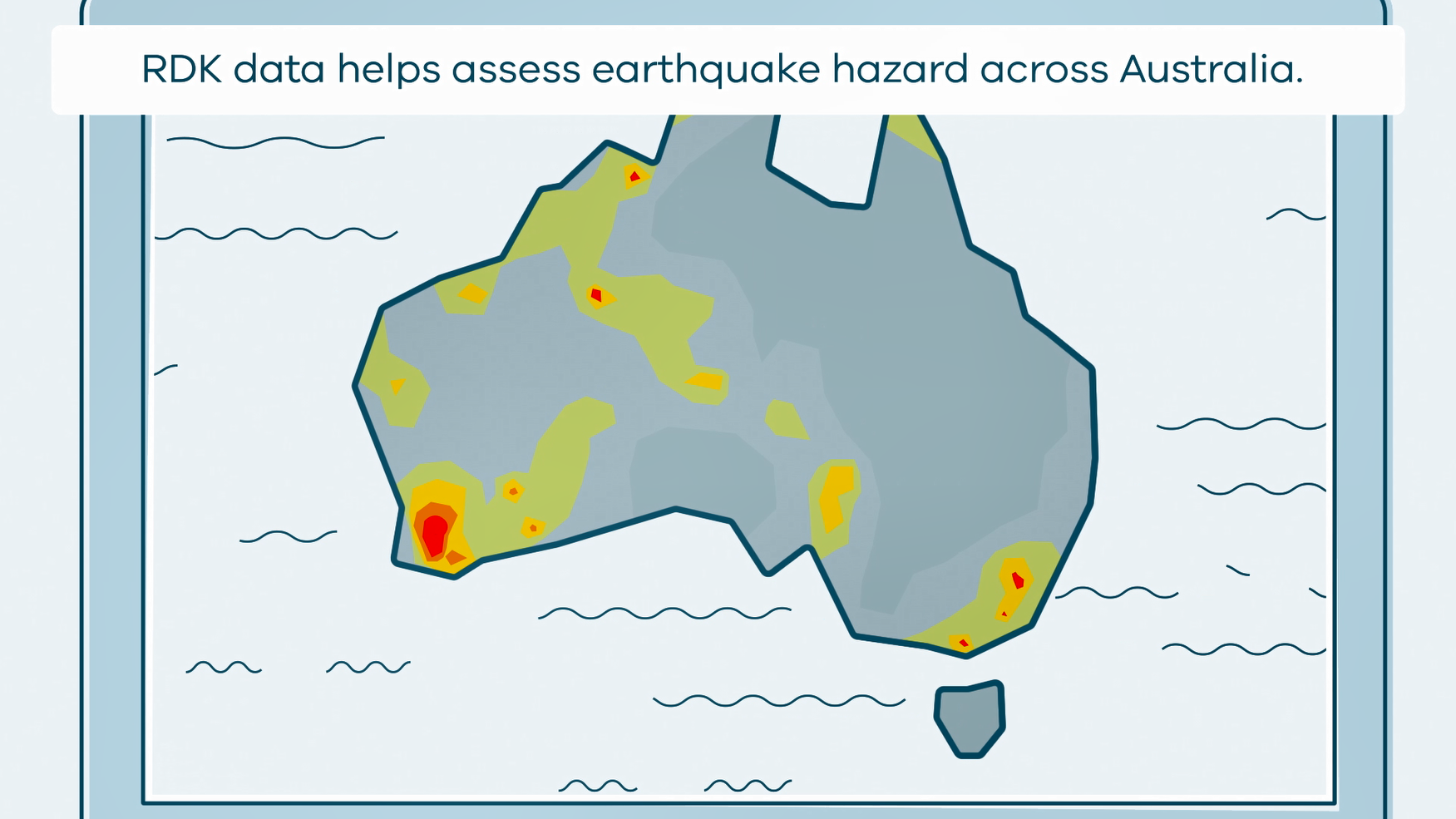
This animation shows what happens when rapid deployment kits (RDKs) are deployed after an earthquake. It is part of a series of Field Activity Technique Engagement Animations. The target audience are the communities that are impacted by GA's data acquisition activities. There is no sound or voice over. The 2D animation includes a simplified view of what rapid deployment kits (RDKs) look like, what is measured, and how scientists use the data.
-
<div>This A1 poster aims to introduce Year 3/4 and older students to the many ways that minerals and elements are used in our everyday lives. </div><div> 6 key uses of 14 critical and strategic minerals are highlighted by colourful lines linking images. Students should take their time viewing the poster; they can follow the wiggly lines from minerals to product or vice versa and work out how many minerals link to each type of use.</div><div> The poster is also suitable for secondary students with the inclusion of a specific element name with each highlighted mineral plus the element symbol and atomic number.</div><div> The poster is intended to be a colourful rich stimulus to engage student interest in the resources from the ground used in our modern world.</div><div><br></div>
-
How do some of the rocks in Minecraft form and behave in real life? This short video discusses bedrock, obsidian and redstone using real rock samples and references to the game.
-
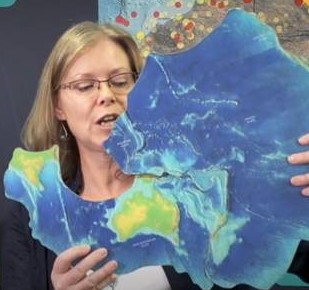
This short video by the Geoscience Australia Education Team is targeted at upper primary students but is suitable for a wider audience. It introduces the concept of tectonic plates making use of a tectonic plates puzzle. Students are asked to predict the direction and speed of plate movement and consider where and why earthquakes happen on the Australian Plate. It is an introduction to major concepts of Earth science delivered in a light-hearted manner with an interactive presentation style.

